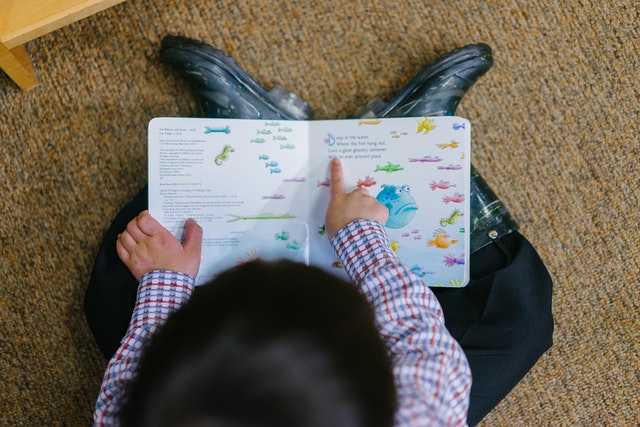A Guide To Social Theory Of Learning

It is well known that children frequently imitate adults and peers. When their child imitated their behavior in public, parents were both delighted and embarrassed.
Social Theory of Learning
Various theories about the complexity of learning have been proposed by social learning theorists.
The Social Learning Theory of Psychologist Albert Bandura expanded on the available learning theories at the time.
He believed that neither the behaviorists nor the cognitive models had a complete theory of social learning. They didn't take into account how social variables influenced behavior, he claims.
Main idea of Social Theory of Learning?
Most learning theories, according to Bandura, ignore the impact of the social environment on the acquisition of new behaviors. Albert Bandura would later revise his model because it did not include and explain all behaviors.
Bandura's Social Learning Theory
This explains how people can learn new things by observing other people's behavior and applying rational mental behavior.
The first step in the social learning process is observational learning. The well-known Bobo doll experiment backed up the observational learning theory of social learning.
.jpg)
The findings of the observational learning study revealed that children imitated the actions of the adults they observed.
The children were also more likely to learn the behavior when they saw adults being rewarded for aggressive or non-aggressive actions than when they were punished for their aggression, according to follow-up results.
People seek approval in their daily lives, so they act in ways that allow them to receive it. During the experiment, it was discovered that the children preferred to mimic the actions of the models who were rewarded for their actions.
They're also more likely to keep doing something that has a positive outcome rather than something that has a negative outcome.
It's possible that one type of behavior is replicated when children imitate a model. Children may identify with a variety of role models in their environment.
Parents, teachers, siblings, friends, peers, cartoon characters, and celebrities can all serve as role models. They identify with these individuals because they possess talents, abilities, or qualities that the child aspires to have.
When they identified with a model, they were more motivated to adopt a variety of the model's behaviors rather than just one.
What is the Difference Between the Two Types of Social Learning?
The Social Learning Theory combines two types of learning theories or serves as a bridge between them.
Learning is based on how an individual responds to environmental stimuli, according to behavioral learning theory.
Cognitive learning, on the other hand, assumes that psychological factors influence learning.
Model of Behaviorism
The traditional theory used by social learning models to explain how people learn is behaviorism.
It was assumed that behavior is learned by watching someone else's behavior, called a model, and then replicating it.
The theory is based on external stimuli and responses to the environment, but it does not take into account internal human behavior.
Bandura's social theory of learning incorporated aspects of behaviorist learning theories as well as principles from cognitive understanding of learning processes.
Theory of Mind
Cognitive functions such as thought, understanding, and perception have an impact on learning's intrinsic reinforcement. The cognitive theory tries to explain the relationship between mental activities and behavioral actions.
.jpg)
Existing knowledge in memory, according to theorists, could guide and assist students in making new knowledge meaningful.
A mediational process is included in the model, in which a mental event occurs as a result of the input received. The end result is an outwardly visible behavior.
Responding to the stimulus necessitates a step of thought in relation to what has been observed. Internal motivation determines whether or not it is worthwhile to practice the new behavior.
What is the social learning theory, and how does it work?
Simply put, social learning theory proposes that children learn by watching others.
This learning can be applied, such as when a child sees a sibling politely ask for a treat and receives one, or it can be ignored, such as when a teenager overhears a friend discussing how to pick a lock and learns something new but does not try it themselves.
Social learning theory plays an important role in how all people, especially children, learn, especially when it comes to aggressive behavior.
Components of Social Learning Theory
Social learning theory is made up of four components:
Component #1: Pay close attention
Children cannot learn unless they are completely focused on the task at hand. Students who notice something unusual or unusual are more likely to pay attention to it, which aids their learning.
Component #2: Retention
This is a term that refers to the ability to Internalizing information is how people learn. We can then recall that information later if we need to respond to a situation in the same way we did in the previous one. We must retain information in order to learn from what we see.
Component #3: Reproduction
This is a term that refers to the act of when we are faced with a situation that requires us to repeat a previously learned behavior or knowledge, we do so. Practicing our response in our heads or through actions can help us improve our response.
Component #4: Inspiration is a powerful tool.
To accomplish anything, one must be motivated. Seeing someone else being rewarded or punished for something they've done is usually enough to motivate us.
This can encourage us to do or refrain from doing the same thing.
Author Bio
This user has not submitted a user bio yet
Article Comments
No Comments!
At present there are zero comments on this article.
Why not be the first to make a comment?
Similar Articles
Sponsor
Search Articles
Experts Column
Latest Articles
Featured Articles
Most Popular Articles












